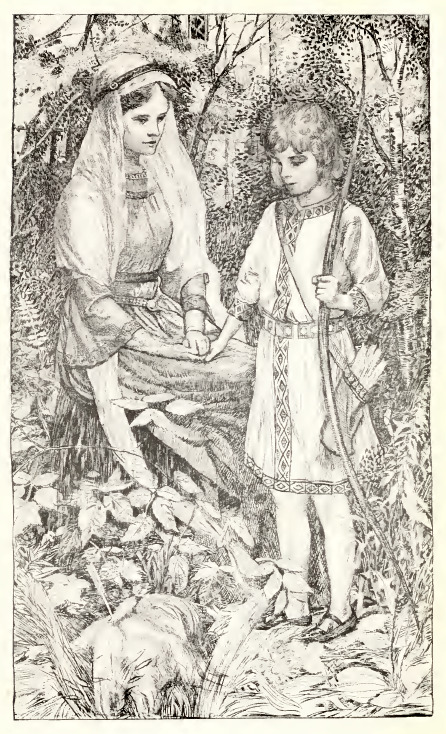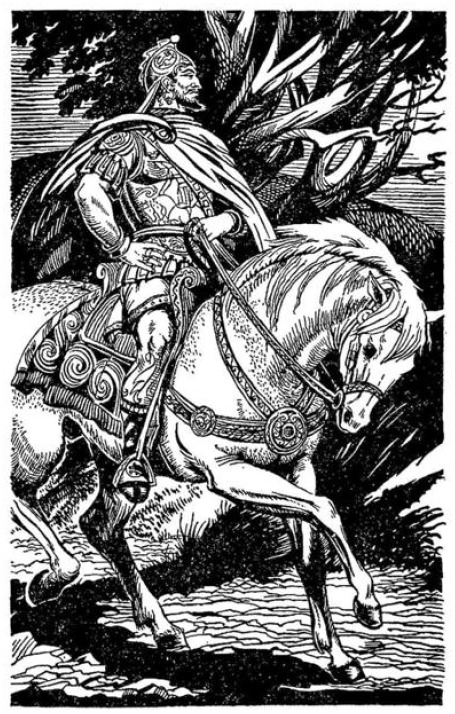#welsh merlin
Explore tagged Tumblr posts
Text
This is for all y’all who write modern day AU. Merlin sleepin’ on the train. I imagine it’s the Transport for Wales service.

#illustrative art#merlin fanart#fanart#merlin art#merlin#merlin emrys#bbc merlin#merlin in wales#welsh merlin#procreate#digital drawing#artist on tumblr#modern au#trains#sleeping man#chillhypocrite
555 notes
·
View notes
Text
Have a friend traveling Wales right now and she has informed me that theRE'S A WELSH TOWN NAMED MERTHYR?? Which sounds a lot like merthur??? And apparently merthyr in Welsh means martyr?? I'm gonna throw up.
#merthyr tydfil is the full name for your googling purposes#essie if u see this post no u don't#I actually know nothing about Welsh so pls tell me if I'm wrong#merthur#bbc merlin#merlin#arthur pendragon#ash posts
546 notes
·
View notes
Text

the lady of the lake
#art of the day#digital illustration#artists on tumblr#women artists#mythology art#digital art#illustration#graphic art#myth#king arthur#arthurian legend#lady of the lake#nimue#merlin#excalibur#welsh mythology
123 notes
·
View notes
Text
Seeking a book to read this winter break?
Brand "New" List of Additions to the Arthurian Preservation Project Archive
In time, all books will be added to my Retellings List or Medieval Literature List respectively, and possibly a third page for handbooks/informational resources. Retellings may be under construction for a bit as I reformat to accommodate the influx in links. There are some duplicates—Alan Lupack's and Mike Ashley's anthologies occasionally contain a one-off story I've otherwise included in an individual volume of collected works by the author.
Links connect to corresponding PDFs on my Google drive where they can be read and downloaded for free. But if you like what I do, consider supporting me on Ko-Fi. I haven't yet read these listings in full; I cannot attest to their content or quality. A big thank you to @wandrenowle for the help collecting!



Modern Retellings
Merlin in Love by Aaron Hill (1790) — Opera about Merlin & his love interest Columbine.
The Fortunate Island by Max Adeler (1882) — A family shipwrecks on an island only to discover its populated with Arthurian knights, including Dinadan, Bleoberis, & Agravaine.
Sir Marrok by Allen French (1902) — Werewolf knight.
The Story of Sir Galahad by Mary Blackwell Stirling (1908) — Illustrated retelling of Malory's Grail Quest.
The Story of Parzival by Mary Blackwell Stirling (1911) — Illustrated retelling of Eschenbach's Parzival.
Stories From King Arthur and His Round Table by Beatrice Clay (1913) — Illustrated retelling of Malory.
Cloud Castle and Other Papers by Edward Thomas (1922) — Contains two Arthurian entries: the story Bronwen The Welsh Idyll about Agravaine & his lady Bronwen, & the essay Isoud about the Prose Tristan.
Collected Poems by Rolfe Humphries (1924-1966) — Contains Dream of Rhonabwy about Owain & Arthur's chess game, A Brecon Version about Essylt/Trystan, Under Craig y Ddynas about Arthur's "sleeping" warriors, & The Return of Peredwr about the Grail Hero's arrival to court.
Peronnik the Fool by George Moore (1926) — The quest for the Holy Grail based on Breton folklore.
The Merriest Knight by Theodore Goodridge Roberts (1946-2001) — Anthology of short stories all about Dinadan.
The Eagles Have Flown by Henry Treece (1954) — A third Arthurian novel from Treece detailing the rivalry between Artos & Medrawt, with illustrations this time.
Launcelot, my Brother by Dorothy James Roberts (1954) — The fall of Camelot from Bors perspective, as a brother of Launcelot.
To the Chapel Perilous by Naomi Mitchison (1955) — Two rival journalists report about the goings on in Camelot.
The Pagan King by Edison Marshall (1959) — Historical fiction from the perspective of Pagan King Arthur.
Kinsmen of the Grail by Dorothy James Roberts (1963) — The Grail Quest but Gawain is Perceval's step dad.
Stories of King Arthur by Blanche Winder (1968) — Illustrated retelling of Malory.
Drustan the Wanderer by Anna Taylor (1971) — Retelling of Essylt/Drustan.
Merlin's Ring by H. Warner Munn (1974) Gwalchmai is a godson of Merlin's that uses his ring to travel through the magical & real worlds.
Lionors, Arthur's Uncrowned Queen by Barbara Ferry Johnson (1975) — Story of Arthur's sweetheart & mother of his son, Loholt.
Gawain and The Green Knight by Y. R. Ponsor (1979) — Illustrated prose retelling of SGATGK poem.
Firelord (#1), Beloved Exile (#2), The Lovers: Trystan and Yseult (#3) by Parke Godwin (pseudonym Kate Hawks) (1980-1999) — Book 1 Arthur, book 2 Guinevere, book 3 Trystan/Yseult.
Bride of the Spear by Kathleen Herbert (1982) — "Historical" romance retelling of Teneu/Owain.
Invitation to Camelot edited by Parke Godwin (1988) — Anthology of assorted Arthurian stories from authors like Phyllis Ann Karr & Sharan Newman.
Arthur, The Greatest King - An Anthology of Modern Arthurian Poems by Alan Lupack (1988) — Anthology of modern Arthurian poetry by various authors including E. A. Robinson, William Morris, C. S. Lewis, & Ralph Waldo Emerson.
The White Raven by Diana L Paxson (1988) — "Historical" romance retelling of Drustan/Esseilte.
Merlin Dreams by Peter Dickinson (1988) — Illustrated by Alan Lee.
The Pendragon Chronicles edited by Mike Ashley (1990) — An anthology of Arthurian stories, including some translations such as the Lady of the Fountain, and retellings by John Steinbeck & Phyllis Ann Karr.
Grails: Quest of the Dawn edited by Richard Gilliam (1992-1994) — Anthology of Grail Quest stories.
The Merlin Chronicles edited by Mike Ashley (1995) — Anthology about Merlin from authors like Theodore Goodridge Roberts & Phyllis Ann Karr.
The Chronicles of the Holy Grail edited by Mike Ashley (1996) — Anthology about the Holy Grail from authors like Cherith Baldry & Phyllis Ann Karr.
The Chronicles of the Round Table edited by Mike Ashley (1997) — Anthology of assorted Arthurian stories from authors like Cherith Baldry & Phyllis Ann Karr.
Sleepless Knights by Mark H Williams (2013) — 1,500 years have passed but Lucan the Butler’s still on the clock.
Medieval Literature
Three Arthurian Romances (Caradoc, The Knight with The Sword, The Perilous Graveyard) [This is on the Internet Archive & cannot be downloaded. If someone could help with that, lmk!] translated by Ross G. Arthur
Le Bel Inconnu (The Fair Unknown) translated by Colleen P. Donagher
Segurant The Knight of the Dragon (Portuguese) edited by Emanuele Arioli
An Anglo-Norman Reader by Jane Bliss
Stanzaic Morte Arthur / Alliterative Morte Arthure edited by Larry D. Benson
Sir Perceval de Galles / Ywain and Gawain edited by Mary Flowers Braswell
Sir Gawain: Eleven Romances and Tales edited by Thomas Hahn
Prose Merlin edited by John Conlee
The Middle English Breton Lays edited by Eve Sailsbury & Anne Laskaya
Il Ciclo Di Guiron Le Courtois Volumes 1-7 (Italian)
Wace's Roman de Brut / Layamon's Brut by Robert Wace & Eugene Mason
Arthurian Literature by Women edited by Alan Lupack & Barbara Tepa Lupack
Handbooks
Studies in the Fairy Mythology of Arthurian Romance by Lucy Allen Paton (1960)
A Companion to the Gawain-Poet edited by Derek Brewer (1990)
The Mammoth Book of King Arthur edited by Mike Ashley (2005)
A Bibliography of Modern Arthuriana 1500-2000 by Ann F. Howey & Stephen R. Reimer (2006)
#arthurian preservation project#arthuriana#arthurian mythology#welsh mythology#arthurian legend#arthurian literature#king arthur#queen guinevere#sir gawain#sir lancelot#sir percival#sir perceval#sir mordred#sir galahad#sir owain#sir yvain#sir kay#sir bedivere#sir bedwyr#merlin#sir tristan#queen isolde#sir marrok#sir lucan#lionors#sir loholt#sir bors#sir agravain#sir agravaine#my post
102 notes
·
View notes
Text
will survives the attack on ealdor and arthur spares his life despite believing him to be a sorcerer which wins some points in will’s book and (like merlin) becomes this annoying leech that won’t leave arthur alone. he follows merlin to camelot and arthur tries many many many many many many many many many many many many many many many many many many many many many many many many many many many many many many many many times to get rid of him but he just keeps popping up and ends up getting a job as a servant in camelot. and ends up serving either gwaine or lancelot bc he and gwaine are a lot alike or bc lancelot knows about merlins magic and guards that secret with his life. anyways he comes with merlin and the crew on all their little hunting trips and quests and teams up with everyone to be an absolute Menace to arthur. late at night, he’ll take out his lute and strum some chords to a song from ealdor and goads merlin into singing and it becomes a Thing that they perform folk songs from ealdor whenever they’re all out in the woods
#merlin rolls his eyes and complains everytime#and then turns around and gives them all a Show#since im american when i hear that merlin is a country boy i keep imagining him w a southern/appalachain accent#which ik isnt right but i cant help it lmao#so like IM imagining him singing like lucy gray type songs#but hes more acurately singing celtic/welsh songs#bbc merlin#merlin emrys#will of ealdor#knights of the round table#arthur pendragon#fanfiction#fanfic#fic idea#prompt
186 notes
·
View notes
Text
few questions for bbc merlin fans:
what are some changes that you wish you could make to the show? are there any interesting hypotheticals or concepts that you wish were explored more? are there any popular fan ideas that you wish might have been canon? what aspects of arthuriana do you wish they had included or taken inspiration from (other than gawain and the green knight)? i want to hear it all!
#once and future; a bbc merlin rewrite#asking for research purposes due to the bbc merlin rewrite project i am working on#(the project this blog is dedicated to)#bbc merlin#arthuriana#text posts#merlin#camelot#arthurian mythology#welsh mythology#arthurian legend#redesign#rewrite#adventures of merlin#merlin bbc#merthur#merwaine#morgwen#reimagining#adaptation#sir gawain#sir lancelot#lanceot#arthur pendragon#morgana pendragon#queen guinevere#gwencelot#merlin emrys#king arthur#my posts
76 notes
·
View notes
Note
who are the main characters in welsh arthurian mythos?
Hi anon! You know, I looked at this question and just fuckin DIED with GLEE! Ehdhdjdhdjd I LOVE SHIT LIKE THIS!!!!! SHDJDJDH
First off, Arthur is pretty big. He's less a king and more of a warlord, but there's still a lot of cultural reverence for him in Welsh things. Seriously, Henry VII - a notable faux-Welshman - named his firstborn son Arthur purely because he was going to be Prince of Wales. Also, in Culhwch and Olwen his retinue has TWO Welsh GODS in it - Manawydan and Pryderi (my beloveds.) Idk what they're doing in it but I am inordinately pleased that they are there.
Also, Uther Pendragon / Uther Ben. Taliesin wrote a poem about him which is super fun. (Also, oddly enough Taliesin himself HAS been linked into Arthurian legends on multiple occasions. He's also another Arthur-type in that he's still regarded as tooling the line between mythical and real.)
Gwenhwyfar is also important even though she takes a back seat. Speculation is rife about whether she had a quest/myth about her (sorta like Culhwch and Olwen) and also her name means 'white phantom!' BRING IT BACK. I, for one, think she definitely did have a quest attributed to her in which Arthur had to do something to get her hand in marriage but idk WHAT.
Also, she's a GIANT!!!!!!!! EJDJDKDKDKD
Gwalchmai is also Super Important. There's speculation as to whether he was a mythical character who got implanted into the mythos or if he was always Atthur's nephew. Basically, he's a giant and he kills giants. Seriously, he's CONSTANTLY killing giants in the mythos. Plus he is called 'Gwalchmai Golden / Silver-tongued' in poetry too. In the Mabinogion, he's very often the one to soothe discord between the other knights so he's very diplomatic too.
Cai and Bedwyr, obviously! They come as a pair. Do Not Separate. Now, Cai is sometimes also seen to be a giant but his dad is Cynyr Ceinfarfog who was a real king. He ruled Dyfed and was the dad of Saint Non and, therefore, grandad to SAINT DAVID. (Wales' patron saint!) So Cai, like Arthur, has a saintly lineage. Before the French Romances shifted his character into the more recognisable Kay, Arthur's grumpy seneschal, Cai was a warrior of great renown. And literally superhuman. Like, nobody would received from.a blow from his sword, he could brave fire and water like nobody else, he has the ability to go nine nights and days without sleep or the need to breathe. He's a ledge.
Now, Bedwyr! Again he's a great warrior and ONE-ARMED. He's called Bedwyr Bedrydant (Bedwyr of the Perfect Sinew) and he's HOT SHIT. Seriously, he's like the most beautiful Knight in Arthur's court. The 10th-century poem 'pa gur' says that assailants 'fell by the hundred / before Bedwyr of the Perfect sinew ... fighting with Garwlwyd/ furious with sword and shield.' (Also, BTW Garwlwyd is possibly a werewolf.)
They have to put up with SO MUCH SHIT from Arthur's escapades it's ridiculous. They had to convince Arthur not to intervene in a King abducting a princess and carrying her back to his court, ffs. Give them a HOLIDAY. WITH SALMON TAXIS.
Now, I would say Merlin BUT he is added later into the mythology. He isn't there straight off. But he is Welsh. He's FUN. He was apparently based on Myrddin Wyllt. He went mad, and lived in a forest. His bestie was a king who died.
Now, I also think Owain, and Geraint on account of their having stories written about them but they're two kings who got folded into the mythos a bit later. Urien (Owain's dad) is another example.
Also, Macsen Wledig too. But again writers melded him in later. And I mean this in the sense that he and Arthur share similarities in how they're perceived in Welsh culture.
Anyways, anon, I hope this helps. I'm probably forgetting a TONNE of characters (Peredur, for one.) But I Don't want to bore you or make anybody trawl through this unwillingly so I shall stop! Hopefully, this helps! Thank u for the question!!!!
#answered ask#arthuriana#welsh mythology#mabinogion#the mabinogion#welsh myth#welsh folklore#arthur pendragon#uther pendragon#gwenhwyfar#queen guinevere#gwalchmai ap gwyar#sir gawain#cai#bedwyr#sir kay#sir bedivere#merlin#myrddin wyllt#honestly i could've yapped about this for HOURS#haven't a fuckin CLUE why i mentioned macsen wledig ejdjfkd#the urge to put peredur in was so strong because he DID EXIST#HES a FIRST COUSIN OF URIEN#sjsjxk#welsh arthurian stuff#also peredur slew the king myrddin wyllt was in service of#arthurian mythology#arthurian legend
73 notes
·
View notes
Text
considering they made Colin Morgan cover up his accent for Merlin, I think it would have been only fair if they made Bradly speak in a dangerously thick welsh accent
#I do think it’s funny just how…. Not at all welsh they made Arthur in bbc#Like Arthur is the welsh guy of all time#The dragon featured on his armor is what the dragon on the flag is referencing#Welsh accent!Arthur 2024#merlin bbc#merlin#bbc merlin#from my own little galaxy world
102 notes
·
View notes
Text

Welsh/Celtic/Arthurian folklore : Merlin
#welsh folklore#arthurian literature#arthurian legend#arthurian mythology#merlin folklore#merlin#moodboard#celtic mythology#aesthetic#matter of britain
114 notes
·
View notes
Text

Merlin James (British, 1960), Street, 1987. Acrylic on canvas, 25 x 35.5 cm.
37 notes
·
View notes
Text
Merlin: H-how do you ask someone out?
Arthur: Well, first-
Gwen: Don't ask him, he asked me out in a McDonalds parking lot.
Merlin: ...And you said yes?
#modern au because *cough* *cough* yeah#mcdonalds car parks are NOT romantic guys#parking lot? i’m british and they’re welsh 🤨#bbc merlin#merlin#bbcm#bbc#bbc's merlin#incorrect merlin quotes#bbc merlin incorrect quotes#merlin emrys#arthur pendragon#guinevere#arthur x gwen#gwen x arthur#argwen#arwen
91 notes
·
View notes
Text


(Source: Historia Regum Britanniae, by Geoffrey of Monmouth)




[...]

(Source: Des Grantz Geanz, from a section in Wace's Brut)
If we are to take the "Albina Myth" as the origin story of the British Giants - Gogmagog, Bran, Rhitta, Idris, et al. - then in a sense Merlin is more a proto-ogre rather than a fairy druid, in like some modern stories.
And if Welsh Myth is taken into account, then not only is Guinevere of demonic lineage, she's infinitely more closely related to Merlin than either Morgan or Nimue.
#giants#merlin#albina#giants of britain#historia regum britanniae#brut#arthuriana#arthurian mythology#british mythology#queen guinevere#gwenhwyfar ferch gogfran gawr#gwenhwyfar#welsh mythology#cewri#des grantz geanz
19 notes
·
View notes
Photo

Merlin by Tammy Wampler
17 notes
·
View notes
Text




A Taste of Camelot
#camelot#illustrations#King Arthur#sir lancelot#guinevere#merlin#welsh mythology#morgan le fay#morgana#morgan pendragon#arthur pendragon
118 notes
·
View notes
Text
BBC Merlin walked to Arthur & Merlin (2015) could run.
#arthuriana#arthurian legend#arthurian mythology#welsh mythology#king arthur#merlin#myrddin#sir lucan#olwen#culhwch and olwen#arthur & merlin 2015#my post#i <3 indie arthurian films#i reeeeally like this arthur he was great#i wish there was a sequel!!!
14 notes
·
View notes
Text
Deep dives into folklore: Welsh folklore

Welsh folklore is a rich tapestry of myths, legends, and traditional stories that have been passed down through generations, shaping the cultural identity of the Welsh people. Rooted in a landscape steeped in history and mysticism, Welsh folklore reflects the unique character of Wales and its people. Let's take a deep dive into some key aspects of Welsh folklore:
The Mabinogion:
The Mabinogion is a collection of Welsh prose tales, comprising some of the earliest literary works in the Welsh language. It consists of four branches: Pwyll Pendefig Dyfed, Branwen ferch Llŷr, Manawydan fab Llŷr, and Math fab Mathonwy.
These tales are a blend of mythology, legend, and fantasy, featuring gods, heroes, and magical elements. Notable characters include Pryderi, Rhiannon, and Bran the Blessed.
The Red Dragon:
The Red Dragon is a symbol deeply ingrained in Welsh folklore and mythology. Legend has it that the red dragon was the emblem of Cadwaladr, a legendary king of Gwynedd. The dragon is associated with Welsh identity and pride and is prominently featured on the national flag of Wales.
King Arthur and the Welsh Connection:
The legendary King Arthur has strong ties to Welsh folklore. While the broader Arthurian legend is widespread, some key elements, such as the magical sword Excalibur and the wizard Merlin, have roots in Welsh tales like the Mabinogion.
Places like Caerleon and the ruins of Castell Dinas Bran in Llangollen are often linked to Arthurian legends.
Y Tylwyth Teg (The Fair Folk):
The Tylwyth Teg are Welsh fairies or magical beings often associated with mounds or fairy rings. They are known for their beauty and magical abilities. Crossing paths with them could lead to both blessings and misfortune, depending on the encounter.
Tales warn of the Tylwyth Teg taking humans to their underground realm, where time passes differently.
The Legend of Gelert:
The legend of Gelert is a poignant tale of loyalty and tragedy. It tells the story of Llywelyn the Great, a medieval Welsh prince, and his faithful hound Gelert. The dog is mistakenly killed by Llywelyn, who later discovers that Gelert had actually saved his son from a wolf.
The Mari Lwyd:
The Mari Lwyd is a traditional Welsh custom associated with the winter season. It involves a horse's skull mounted on a pole, decorated with ribbons and bells, carried by individuals who go from house to house, engaging in a form of door-to-door singing and challenge.
Celtic Water Spirits:
Wales, with its rivers, lakes, and coastline, has numerous tales of water spirits. Creatures like the Afanc, a lake monster, and the Gwragedd Annwn, beautiful water maidens, are part of Welsh folklore. These spirits often play pivotal roles in cautionary tales and myths.
Branwen Uerch Lyr:
The tragic tale of Branwen, the sister of the legendary King Bran the Blessed, is another prominent story in Welsh folklore. It involves betrayal, war, and the symbolic connection between Wales and Ireland.
Welsh folklore continues to inspire contemporary literature, art, and cultural expressions, maintaining a strong connection to the country's past. The tales and mythical elements contribute to the unique identity of Wales and its people, adding a layer of enchantment to the historical and natural landscape.
Taglist (reply or reblog to be added): @axl-ul @crow-flower @thoughts-fromthevoid @alderwoodbooks @harleyacoincidence @tuberosumtater @sonic-spade @theonlygardenia @holymzogynybatman @nulliel-tres @w0rkah0licz @sylvanthorn @tigertaurus22 @profiterole-reads @mathias-musings @1899adgg1997tbmd @grimmparanormalinvestigations
#deep dives into folklore#writeblr#writers of tumblr#writing#bookish#booklr#fantasy books#creative writing#ya fantasy books#book blog#ya books#folklore#welsh folklore#mythology#welsh mythology#merlin#king arthur#emrys#bedd gelert
46 notes
·
View notes